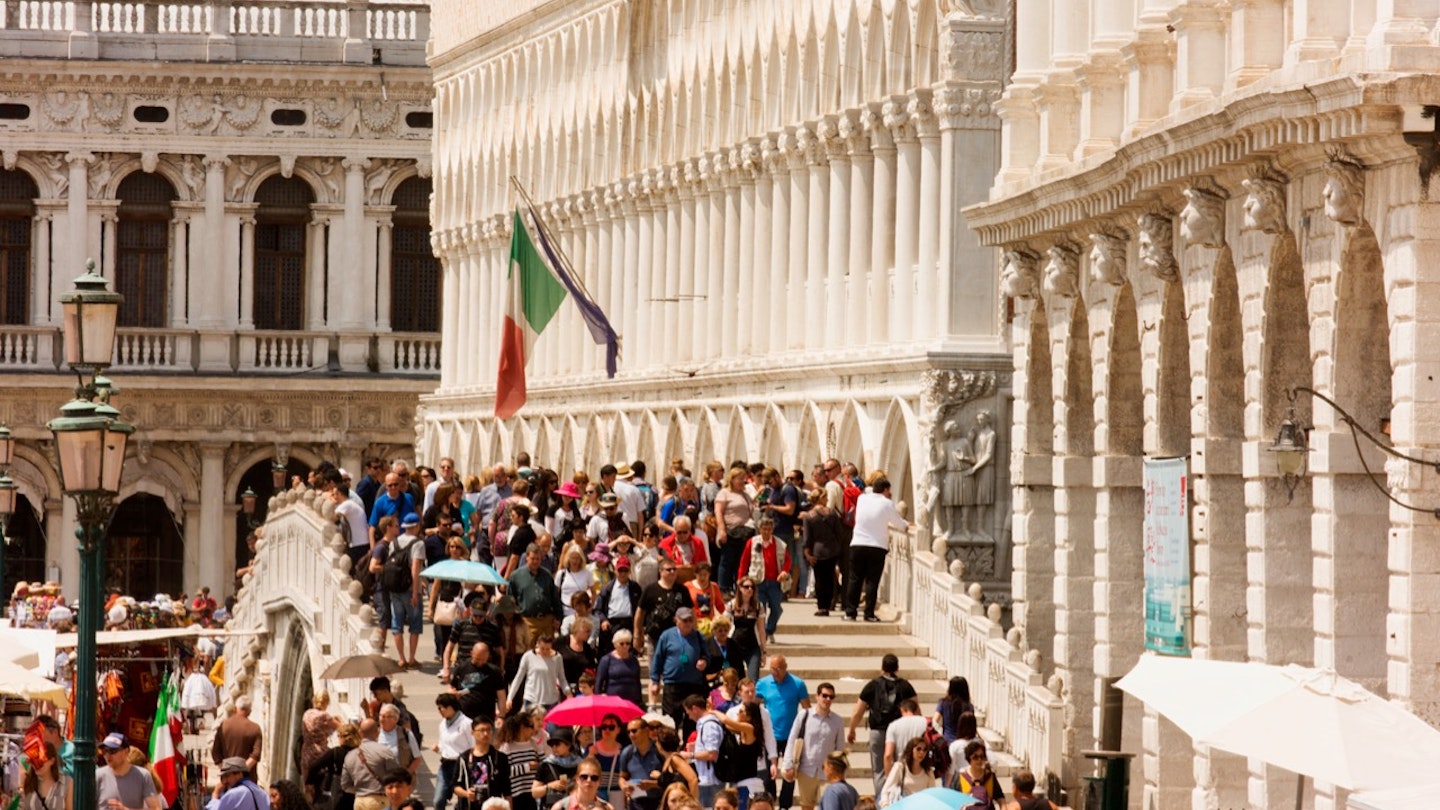This year, the issue of overtourism took center stage, especially in high season as cities around the world appear to have reached tipping points.
In places like Rome, Venice, and Amsterdam, officials announced bold new measures to tackle tourist overload and preserve livability for locals. New rules were introduced to channel and distribute visitors, curb bad behavior, or give popular sites some breathing room.
As destinations continue to figure out how to cultivate a sustainable tourist industry in the coming years, we can expect to see more changes. Let’s look back on how recent developments have altered visitor interactions in some of the most popular travel environments.
Italy

Drinking in the streets, littering, swimming in canals, wading in fountains, or generally being a nuisance to public order can now result in fines in popular Italian regions. Cities such as Venice, Rome, Florence, Milan, and Sardinia have reported a rise in tourist-related misbehavior and responded with a wave of bans to encourage respectful behavior.
Rome, which receives approximately 20 million visitors annually, has also considered policies to better manage traffic flow and improve safety at congested tourist sites. During summer, a €250 fine was introduced for anyone caught sitting on the Spanish Steps, and plans to restrict access to the Trevi Fountain were recently announced.
Amsterdam, the Netherlands

In May, the Netherlands Tourist Board announced its intention to stop actively promoting the country as a tourist destination and instead focus on redistributing visitors to lesser-known regions. Amsterdam implemented new strategies to manage tourist numbers by banning tour groups in the Red Light District in 2020 and prohibiting beer bikes. Additionally, the iconic ‘I Love Amsterdam’ sign was removed after it was estimated that over 6,000 selfies were taken daily with it.
Police have been equipped with mobile card readers to issue on-the-spot fines for antisocial behavior. Public urination, disorderliness, and littering incur fines of €140, while drinking alcohol on the streets results in a €95 fine.
Moreover, starting from January 1, 2020, the city will increase its tourist tax on all visitors staying overnight in Amsterdam, including those in hotels, guesthouses, or rental properties. Amsterdam’s population is around 850,000, but it welcomed 19 million tourists last year, with projections soaring to 29 million by 2025.
Paris, France

This year, Paris officials announced plans to ban tourist buses from the city center and encouraged visitors to opt for “environmentally friendly” transportation options such as bikes and public transport. Emmanuel Grégoire, Paris’ deputy mayor, stated that this decision is part of a larger initiative to reduce mass tourism, as locals are increasingly concerned about noise, congestion, and pollution from these vehicles.
Paris remains a top travel destination, having received 50 million visitors last year, making France the most visited country in the world with 87 million visitors in 2018.
Bruges, Belgium

Overtourism has not reached Belgium’s picturesque city of Bruges yet, and authorities are keen to maintain that status. Visitor numbers have surged, with the city receiving approximately 8.3 million tourists in 2018. To proactively address potential challenges, Bruges capped the number of cruise ships docked at its port, reducing the amount from five to two at one time. Cruise ships are encouraged to dock during weekdays rather than on weekends to better manage crowds.
Disney Parks, USA

With the arrival of Star Wars-themed lands in Disneyland California and Walt Disney World Florida, new rules were implemented to manage the influx of visitors. Smoking is banned in most areas, with designated smoking areas provided, and strollers wider than 31 inches are prohibited. Additionally, bathroom passes have been introduced, allowing guests to leave long queues for restroom breaks without losing their place in line. These small adjustments are aimed at enhancing the visitor experience.





